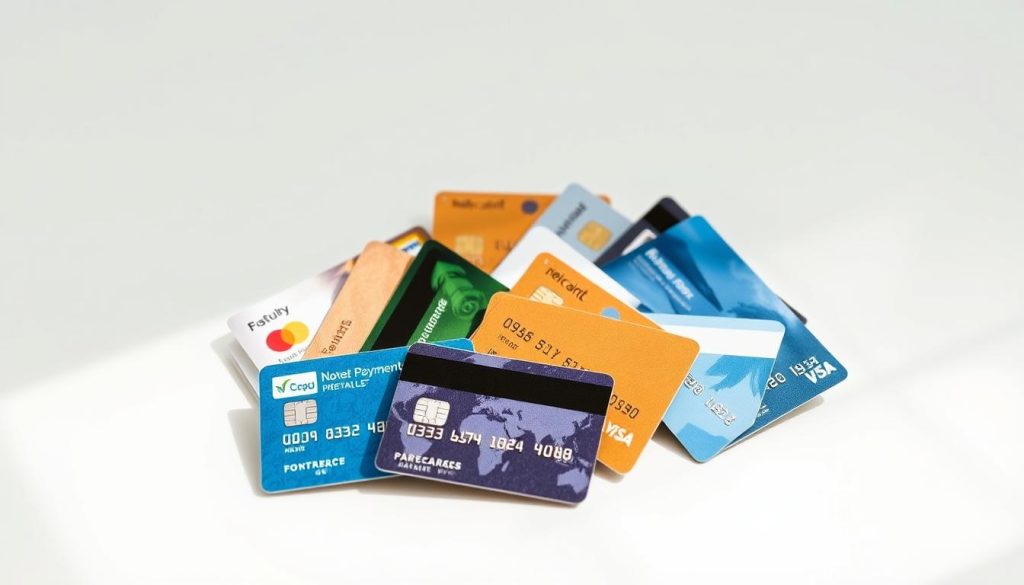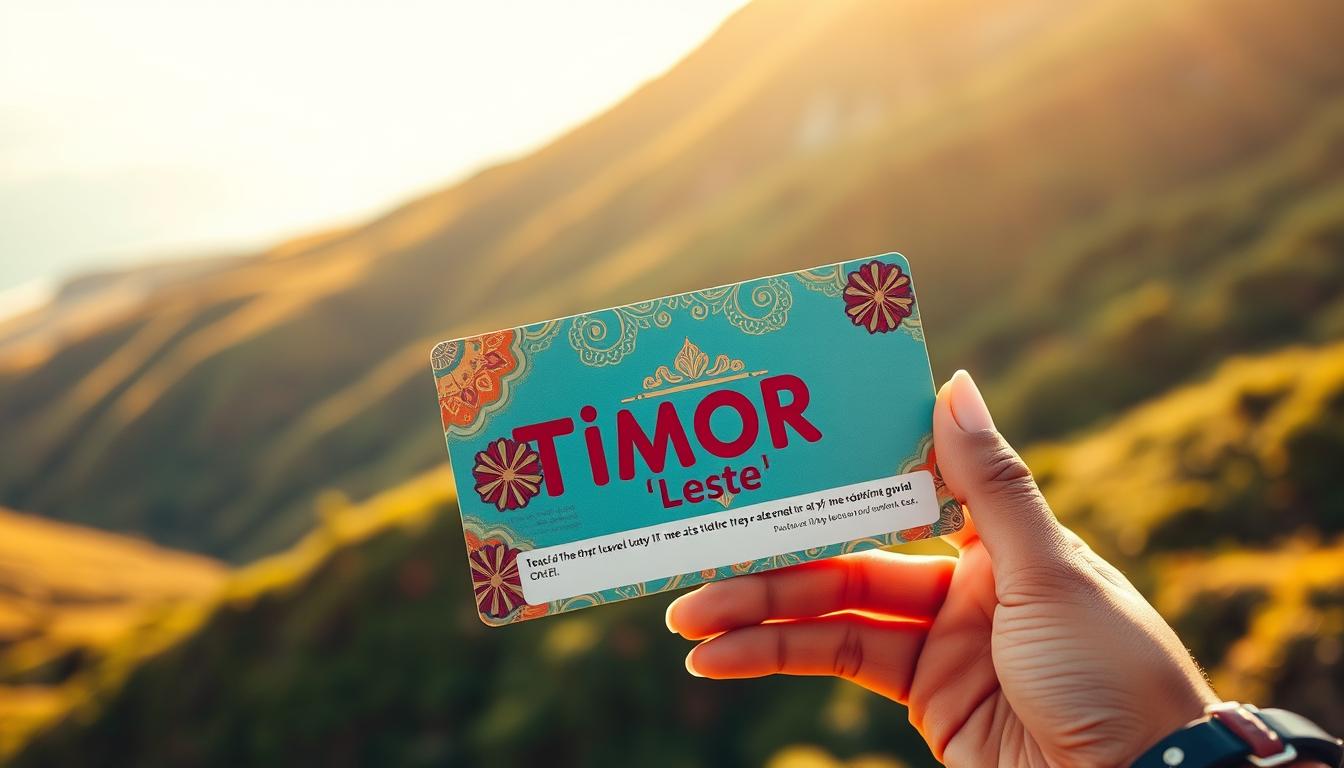Did you know that the U.S. dollar is the official currency in this Southeast Asian destination? This might come as a surprise, but it’s a fact that makes managing your money here a bit easier. However, navigating payments and currencies still requires some planning to avoid unnecessary fees and hassles.
This guide is designed to help you make the most of your trip by providing practical tips on handling money. You’ll learn about the best travel cards, like Wise and Revolut, which can save you from high fees and ensure secure transactions. We’ll also cover essential topics such as currency exchange rates, ATM withdrawals, and payment methods that work best in this region.
Whether you’re traveling from Australia or Singapore, this guide offers valuable insights tailored to your needs. By the end, you’ll feel confident about managing your finances, so you can focus on enjoying your adventure.
Introduction to Currencies and Payments in Timor-Leste
Managing your money in a new country can be tricky, but knowing the basics helps. When you arrive, you’ll find that the U.S. dollar is the official currency. This makes transactions straightforward, but there are still a few things to keep in mind to avoid unnecessary fees or hassles.
What to Expect When You Arrive
Upon arrival, you’ll likely need cash for immediate expenses like transportation or small purchases. ATMs are available in major cities, but it’s wise to carry some U.S. dollars with you. If you’re traveling from Australia or Singapore, check your visa requirements beforehand to ensure a smooth entry.
Exchange rates can vary, so it’s a good idea to compare rates before converting your money. Many banks and exchange offices offer competitive rates, but fees can add up. Planning ahead ensures you get the best deal.
Overview of Payment Options
In this destination, both cash and cards are widely accepted. However, smaller vendors or rural areas may only take cash. Here’s a quick overview of your options:
| Payment Method | Acceptance | Tips |
|---|---|---|
| Cash (USD) | Widely accepted, especially in rural areas | Carry small denominations for convenience |
| Credit/Debit Cards | Accepted in hotels, restaurants, and larger stores | Check for foreign transaction fees |
| Mobile Wallets | Limited availability | Use as a backup option |
Understanding these options will help you navigate payments with ease. Whether you’re shopping at a local market or dining at a restaurant, being prepared ensures a stress-free experience.
Currency Overview and Acceptance in Timor-Leste
Understanding how money works in a new place can make your trip smoother. In this destination, the U.S. dollar is the official currency, which simplifies transactions for many travelers. However, knowing the nuances of cash and card usage can save you time and avoid unnecessary fees.
US Dollar as the Official Currency
The U.S. dollar is central to all transactions here. This means you won’t need to worry about exchanging currency if you’re coming from the U.S. For others, it’s a good idea to convert your money before arriving to avoid unfavorable rates. Most businesses, from hotels to local markets, accept dollars, making it convenient for everyday spending.
Cash vs. Card Payments
While cash is widely accepted, especially in rural areas, credit cards are common in larger establishments like hotels and restaurants. Smaller vendors often prefer cash, so carrying small denominations is helpful. ATMs are available in cities, but they can have high fees and occasional outages, so plan accordingly.
Here’s a quick comparison of payment methods:
- Cash: Ideal for small purchases and rural areas.
- Credit/Debit Cards: Best for hotels and larger stores, but check for foreign transaction fees.
- Mobile Wallets: Limited availability, so use as a backup.
Day-to-day spending often leans toward cash for its convenience. However, using a travel money card can offer better security and flexibility, especially for larger expenses. Whether you’re shopping at a local market or dining out, being prepared ensures a stress-free experience.
Key Payment Methods for Travelers
When traveling, choosing the right payment method can make your trip smoother and more secure. Modern solutions like contactless and chip payments, as well as mobile wallets, offer convenience and safety. These options adapt well to local infrastructure, ensuring you’re prepared for any situation.
Contactless and Chip Payments
Contactless and chip payments are widely accepted in many destinations. These methods are fast, secure, and minimize the need for physical cash. Simply tap your card or insert it into a terminal to complete your transaction. This is especially useful in busy areas like airports, hotels, and restaurants.
Using a credit card with these features ensures you’re protected against fraud. Many cards also offer rewards or cashback, adding extra value to your spending. Always check for foreign transaction fees to avoid unexpected charges.
Mobile Wallet Solutions
Mobile wallets like Apple Pay and Google Pay provide an additional layer of convenience. These apps store your card information securely on your phone, allowing you to pay with just a tap. They’re ideal for quick transactions at cafes, shops, and even public transport systems.
One of the biggest advantages is enhanced security. Your card details are encrypted, reducing the risk of theft. Plus, you won’t need to carry as much cash, making your travels lighter and safer.
Whether you prefer contactless, chip, or mobile payments, these methods offer flexibility and peace of mind. They’re designed to work seamlessly with local systems, so you can focus on enjoying your adventure.
Benefits of Using a Travel Money Card
Travel money cards are a game-changer for managing finances abroad. They combine security and flexibility, making them an ideal choice for modern travelers. Whether you’re taking a taxi or shopping at a local market, these cards ensure your money is safe and accessible.
Enhanced Security and Flexibility
One of the biggest advantages of a travel money card is its enhanced security. Unlike carrying cash, these cards aren’t directly linked to your primary bank account. This reduces the risk of theft or fraud. If your card is lost or stolen, you can quickly block it and protect your funds.
These cards also offer flexibility. You can manage multiple currencies in one account, which is perfect for trips to destinations with varying payment conditions. Plus, you can prelock exchange rates, ensuring you get the best deal even if rates fluctuate.
Avoiding Hidden Fees
Traditional bank cards often come with hidden fees, such as foreign transaction charges or ATM withdrawal costs. Travel money cards, on the other hand, are designed to minimize these expenses. Providers like Wise and Revolut offer competitive fee structures, saving you money on every transaction.
For example, using a travel card for a taxi ride or a meal at a local restaurant can help you avoid unfavorable conversion conditions. This makes budgeting easier and ensures you’re not overpaying for everyday expenses.
Adapting to Travel Conditions
Travel money cards are built to meet different travel conditions and spending habits. Whether you’re exploring a bustling city or a remote village, these cards ensure you’re prepared. They’re widely accepted, and their low fee structures make them a cost-effective option for all types of travelers.
By choosing a travel money card, you’re not just managing your finances—you’re enhancing your travel experience. From avoiding hidden fees to ensuring security, these cards are a must-have for any trip.
Timor-Leste: Ultimate Travelers Guide to Currencies & Payments
Navigating payments in a new destination can be stress-free with the right tools. When staying at a hotel or dining at a restaurant, knowing your options ensures a smooth experience. Most establishments accept major credit cards, but it’s always good to carry some cash for smaller transactions.
Hotels often provide secure payment options, including contactless and chip-enabled cards. These methods are quick and reduce the need for handling cash. Many hotels also accept travel money cards, which are ideal for managing multiple currencies without high fees.
Restaurants, especially in urban areas, are increasingly adopting modern payment systems. While larger eateries accept cards, smaller ones may prefer cash. Using a travel card can simplify splitting bills and calculating exchange rates, making group meals hassle-free.
Travel money cards are widely accepted in major service hubs like hotels and restaurants. They offer added security and flexibility, ensuring your funds are safe while you enjoy your trip. Whether you’re checking into a hotel or dining out, these cards enhance your overall experience.
By choosing the right payment methods, you can focus on enjoying your stay. Secure and efficient options make every transaction seamless, leaving you more time to explore and relax.
Comparing International Travel Cards
Not all travel cards are created equal—some offer better rates and lower fees. When choosing a card for your trip, it’s essential to compare features, costs, and convenience. This ensures you get the best value for your money, whether you’re exploring a bustling city or a remote village.

Provider Features and Fees Analysis
Travel cards like Wise, Revolut, and Travelex are popular for their competitive exchange rates and low fees. Wise, for example, allows you to hold multiple currencies in one account, making it ideal for trips to different countries. Revolut offers similar features but includes budgeting tools and spending insights.
When comparing cards, pay attention to ATM withdrawal fees, spending fees, and currency conversion costs. Some providers charge a flat fee for withdrawals, while others offer free transactions up to a certain limit. These details can significantly impact your overall expenses.
Wise versus Revolut and Others
Wise and Revolut are often compared for their user-friendly interfaces and cost-effective features. Wise is known for its transparent fee structure, while Revolut offers additional perks like travel insurance and cashback rewards. Travelex, on the other hand, is a reliable option for those who prefer prepaid cards with fixed exchange rates.
Here’s a quick comparison of these providers:
| Provider | Key Features | Fees |
|---|---|---|
| Wise | Multi-currency account, transparent fees | Low ATM withdrawal fees |
| Revolut | Budgeting tools, travel insurance | Free withdrawals up to a limit |
| Travelex | Prepaid card, fixed exchange rates | Flat fee for withdrawals |
Holding cash in multiple currencies can also be beneficial, especially in areas with limited card acceptance. Travel cards make this easy by allowing you to switch between currencies at competitive rates. This flexibility ensures you’re prepared for any situation, whether you’re shopping at a local market or dining at a restaurant.
By comparing these cards, you can choose the one that best suits your travel needs. Focus on overall cost, convenience, and the features that matter most to you. This way, you can enjoy your trip without worrying about unnecessary fees or hassles.
Guide to the Wise Travel Card in Detail
Traveling with the right financial tools can make all the difference. The Wise travel card is a standout option for managing your money abroad. With support for 40+ currencies and competitive market rates, it’s designed to save you time and money. Whether you’re a frequent traveler or a first-time tourist, this card offers features that simplify your financial journey.
Features and Benefits
The Wise travel card is packed with features that cater to modern travelers. One of its biggest advantages is the ability to hold multiple currencies in one account. This is especially useful if you’re visiting destinations with varying exchange conditions. You can make sure you’re always prepared by converting funds at the mid-market rate, which is often better than what banks offer.
Here are some key benefits:
- Low fees: Conversion fees are typically between 0.5% to 1%, saving you money on every transaction.
- Competitive rates: Access mid-market rates, ensuring you get the best value for your money.
- Convenience: Top up your card easily and convert funds in seconds.
How It Works in Everyday Transactions
Using the Wise travel card is straightforward. Before your trip, you can top up your account and convert funds into the currencies you’ll need. This lets you lock in favorable rates and avoid last-minute stress. Once abroad, you can use the card for everyday expenses like dining, shopping, or transportation.
For example, if you’re exploring a local market, you can use your card to pay without worrying about high conversion fees. Similarly, when dining at a restaurant, you’ll appreciate the convenience of quick and secure transactions. The card is widely accepted, making it a reliable choice for tourists.
By choosing the Wise travel card, you’re not just managing your money—you’re enhancing your travel experience. Its low fees, competitive rates, and ease of use make sure you can focus on enjoying your adventure without financial worries.
How to Apply for a Travel Card from Australia and Singapore
Applying for a travel card is a straightforward process that can save you time and money. Whether you’re traveling from Australia or Singapore, these cards offer a convenient way to manage your finances abroad. Here’s a step-by-step guide to help you get started.
Step-by-Step Application Process
1. Choose Your Provider: Start by selecting a travel card provider like Wise, Revolut, or Instarem. Each offers unique features, so compare fees, exchange rates, and usability to find the best option for your needs.
2. Create an Account: Visit the provider’s website or app and sign up. You’ll need to provide basic information, such as your name, address, and contact details. This is the first entry point to accessing your travel card.
3. Complete Verification: Most providers require identity verification. Upload a copy of your passport or driver’s license and a recent utility bill. This step ensures your account is secure and compliant with regulations.
4. Order Your Card: Once verified, you can order your travel card. Some providers offer both physical and virtual cards. Choose the option that suits your travel plans. Physical cards are ideal for in-person transactions, while virtual cards work well for online purchases.
5. Top Up Your Account: Add funds to your travel card before your trip. Many providers allow you to hold multiple currencies, so convert your money at competitive rates. Applying in advance ensures your card arrives on time and is ready for use.
Options for Different Needs
Travel cards cater to a variety of financial needs. For frequent travelers, cards like Wise and Revolut offer multi-currency accounts and low fees. If you prefer prepaid cards, Instarem is a reliable option. Consider your spending habits and travel destinations when making your choice.
| Provider | Key Features | Best For |
|---|---|---|
| Wise | Multi-currency account, low fees | Frequent travelers |
| Revolut | Budgeting tools, travel insurance | Tech-savvy users |
| Instarem | Prepaid card, fixed exchange rates | Budget-conscious travelers |
By following these steps, you can secure a travel card that meets your needs. Applying in advance ensures you’re prepared for your trip, allowing you to focus on enjoying your adventure.
Understanding Currency Conversion and Exchange Rates
Getting the best value for your money starts with understanding currency conversion and exchange rates. These factors play a crucial role in managing your finances, especially when traveling. By knowing how rates work, you can save money and avoid unnecessary fees.

What Is the Mid-Market Exchange Rate?
The mid-market exchange rate is the midpoint between the buy and sell prices of two currencies. It’s the rate banks use when trading with each other. Unlike the rates offered to consumers, it doesn’t include extra fees or markups. This makes it the fairest rate available.
Using a travel card like Wise, which offers the mid-market rate, ensures you get the best deal. Over several months, this can save you a significant amount of money. Transparent fee structures also help you plan your budget more effectively.
Why Understanding Rates Matters
Before making any transactions, it’s essential to understand exchange rates. Fluctuations can affect the cost of purchases, especially in emergency situations. For example, if you need cash quickly, unfavorable rates can increase your expenses.
Monitoring rates through real-time apps like XE Currency Converter or OANDA can help you make informed decisions. These tools provide up-to-date information, so you can convert your money at the right time.
Tips for Monitoring Exchange Rates
- Use Real-Time Apps: Tools like TransferWise and Currency Converter Plus offer accurate, real-time data.
- Check Multiple Sources: Compare rates from different providers to find the best deal.
- Plan Ahead: Convert your money when rates are favorable to avoid last-minute stress.
Exchange Rates in Emergency Situations
In an emergency, knowing the current exchange rate can save you from overpaying. For instance, if you need to withdraw cash from an ATM, understanding the rate ensures you’re not charged excessive fees. Being informed also helps you avoid scams or unfavorable conversion conditions.
| Tool | Features | Best For |
|---|---|---|
| XE Currency Converter | Real-time rates, historical data | Travelers who need accurate, up-to-date information |
| OANDA | Supports 190+ currencies, historical data | Frequent travelers and businesses |
| TransferWise | Low fees, mid-market rates | Budget-conscious travelers |
By understanding currency conversion and exchange rates, you can make smarter financial decisions. Whether you’re planning your monthly budget or preparing for an emergency, this knowledge ensures you’re always in control of your money.
Managing ATM Withdrawals in Timor-Leste
Planning your cash withdrawals ahead of time can save you from unexpected fees and hassles during your trip. While ATMs are available in major cities like Dili, high fees and occasional technical issues can complicate the process. Here’s how to manage your cash needs efficiently.
Tips to Avoid Excessive Fees
To minimize costs, plan your cash needs in advance. Withdraw larger amounts less frequently to avoid repetitive fees. In some cases, border ATMs may charge additional fees, so it’s best to use ATMs in central areas.
Always check for fixed costs per transaction. Some ATMs display extra fees before you proceed. If the fees seem unusually high, cancel the transaction and look for another ATM. This simple step can save you money over the course of your trip.
Another common challenge is technical issues. If an ATM is out of service, don’t panic. Have a backup plan, such as carrying a travel card or some cash. This ensures you’re prepared for any situation.
Finally, consider using a low-cost ATM card that offers free or cheap international withdrawals. This can significantly reduce your expenses, especially if you’re withdrawing cash frequently. By following these tips, you can manage your cash needs without breaking the bank.
Security Considerations While Traveling
Ensuring your money stays safe while traveling is just as important as planning your itinerary. Taking a few precautionary steps can protect your funds and give you peace of mind throughout your trip. Here’s a guide to help you stay secure while managing your finances abroad.
Protecting Your Funds on the Go
One of the easiest ways to safeguard your money is by using mobile alerts and two-factor authentication. These tools notify you of any suspicious activity on your accounts. For example, if your travel card is used unexpectedly, you’ll receive an alert immediately.
Another point to consider is keeping your travel funds separate from your primary bank account. This minimizes risk if your card is lost or stolen. Many travelers use prepaid travel cards for this purpose, as they’re not directly linked to their home accounts.
If your card is lost or stolen, act quickly. Most travel card providers offer phone-based freezing options. This allows you to lock your card instantly, preventing unauthorized use. Always keep your provider’s contact information handy for emergencies.
Emergency Practices and Contact Points
In case of theft or loss, knowing your contact points is crucial. Save the local emergency numbers for police (7723 0635) and ambulance (7723 6662) in your phone. These can be lifesavers in urgent situations.
It’s also a good idea to have a backup plan. Carry a small amount of cash in a secure location, separate from your wallet. This ensures you’re not left stranded if your card is compromised.
Finally, consider sharing your travel itinerary with someone back home. This adds an extra layer of security, as they can assist you in case of emergencies. Precautionary measures like these can make all the difference during your travels.
“Taking steps to secure your money isn’t just about protection—it’s about peace of mind.”
By following this guide, you can focus on enjoying your trip without worrying about financial safety. From mobile alerts to emergency contacts, these tips ensure you’re prepared for any situation.
Legal and Safety Considerations for Travelers
Understanding local laws and safety measures is crucial for a smooth trip. When you’re on a tour or preparing for a flight, knowing the legal landscape can save you from unexpected issues. Local regulations may differ significantly from what you’re used to, especially regarding payment settlements and overall safety.

Local Laws and Payment Regulations
Before you use your payment cards, it’s essential to understand the local legal environment. Some areas have strict rules about transactions, and violating them can lead to severe penalties. For example, certain establishments may only accept cash, and using a card could result in fines or legal complications.
Respecting local customs is equally important. While on your tour, take time to learn about cultural norms and legal requirements. This not only ensures compliance but also helps you build positive interactions with locals.
Practical Guidelines for Legal and Safety Issues
If you encounter legal or safety issues during your flight or stay, here’s what to do:
- Stay Calm: Panicking can escalate the situation. Assess the issue calmly and seek help if needed.
- Contact Authorities: Save local emergency numbers, such as police (7723 0635) and ambulance (7723 6662), in your phone.
- Know Your Rights: Familiarize yourself with your rights as a traveler to avoid exploitation.
“Preparation is the key to avoiding legal and safety issues while traveling.”
By following these tips, you can ensure a safe and enjoyable trip. Whether you’re on a tour or preparing for a flight, understanding local laws and safety measures is essential for a hassle-free experience.
Tech Tips for Managing Your Travel Money
Staying on top of your travel finances is easier than ever with modern tech solutions. Mobile apps and instant alerts can help you monitor your funds, avoid unexpected issues, and enforce your personal financial rules. Here’s how to make the most of these tools.
Advantages of Mobile Banking Apps
Mobile banking apps let you track your spending in real-time. You can check your balance, review transactions, and even convert currencies with just a few taps. This is especially useful for avoiding problems like overspending or unauthorized charges.
Many apps also offer budgeting features. You can set spending limits and receive alerts when you’re close to exceeding them. This helps you stick to your financial rules and stay within your travel budget.
Setting Up Instant Alerts
Instant notifications are a lifesaver for managing your travel money. Set up alerts for every transaction to stay informed about your spending. If there’s an unexpected charge, you’ll know immediately and can take action to resolve the issue.
Alerts also help you avoid ATM fees or unfavorable exchange rates. For example, if you’re withdrawing cash, you’ll get notified about the amount and any associated fees. This ensures you’re always in control of your finances.
Troubleshooting Common Problems
Even with the best tools, you might encounter problems like app crashes or failed transactions. To avoid these issues, keep your apps updated and ensure you have a stable internet connection. If a transaction fails, try again or use an alternative payment method.
For added security, enable two-factor authentication on your accounts. This adds an extra layer of protection and ensures your funds are safe, even if your phone is lost or stolen.
Practical Steps for Secure Money Management
- Use Trusted Apps: Stick to well-known providers like Wise or Revolut for reliable service.
- Backup Your Data: Save your account details in a secure location in case you lose access to your phone.
- Monitor Regularly: Check your accounts daily to spot any unusual activity early.
By following these tips, you can manage your travel money with confidence. Tech-savvy solutions not only simplify your finances but also give you peace of mind on the go.
Additional Tools for Budgeting Your Trip
Planning your trip’s budget doesn’t have to be stressful with the right tools. From apps to online calculators, there are plenty of resources to help you manage your money effectively. These tools can save you from unexpected expenses and ensure you get the best value for your trip.
Pre-Trip Planning Resources
Before you pack your bags, take time to explore budgeting tools. Apps like Wise and Revolut let you compare exchange rates and fees in real-time. This helps you choose the best travel card for your needs. Online calculators can also estimate your overall travel expenses, from flights to daily spending.
- Compare Fees: Use tools to analyze travel card fees and bank charges. This ensures you’re not overpaying for transactions.
- Plan Ahead: Convert your money at favorable rates before your trip. This locks in savings and avoids last-minute stress.
- Track Spending: Mobile apps let you monitor your expenses daily. This helps you stick to your budget and avoid overspending.
These tools are especially useful for avoiding hidden costs. For example, some banks charge high fees for international withdrawals. By comparing options, you can find a card with low or no fees.
“The right budgeting tools can turn a stressful trip into a seamless adventure.”
Here’s a quick comparison of popular budgeting tools:
| Tool | Key Features | Best For |
|---|---|---|
| Wise | Multi-currency account, low fees | Frequent travelers |
| Revolut | Budgeting tools, travel insurance | Tech-savvy users |
| Travelex | Prepaid card, fixed exchange rates | Budget-conscious travelers |
By using these tools, you can manage your money wisely and focus on enjoying your trip. Whether you’re comparing exchange rates or tracking expenses, these resources make budgeting easy and stress-free.
Insider Tips for Currency Exchange
Getting the best deal on currency exchange can make a big difference in your travel budget. Knowing when and how to convert your money ensures you benefit from favorable rates and avoid unnecessary fees. Here are some insider tips to help you navigate currency exchange like a pro.
Timing Your Currency Conversion
Exchange rates fluctuate throughout the day, so timing is key. Monitor rates using apps like XE Currency Converter or OANDA to identify the best times to convert your money. Early mornings or late evenings often see more favorable rates due to global market activity.
Planning ahead is another smart way to save. Convert your money when rates are favorable rather than waiting until the last minute. This approach helps you lock in better rates and avoid stress during your trip.
Avoiding Poor Exchange Rates
Be cautious of exchange services at airports or tourist hotspots. These locations often charge higher fees and offer less favorable rates. Instead, use reputable banks or online services like Wise, which provide mid-market rates with low fees.
When making a transaction, always ask about additional charges. Some providers add hidden fees that can significantly increase your costs. Comparing options beforehand ensures you get the best deal.
Taking Advantage of Special Offers
Many travel cards and money transfer services offer special deals for new customers. For example, providers like MoneyGram and Remitly often have promotions for first-time users. These offers can save you money on fees and improve your exchange rates.
Digital platforms also provide convenience. Apps like Revolut let you convert currencies instantly, often at better rates than traditional banks. Using these tools can make your travel finances more efficient.

Planning Your Withdrawals
ATMs are a convenient way to access cash, but they can come with high fees. In some destinations, like Timor-Leste, ATMs charge a fixed fee of $5 per withdrawal. To minimize costs, withdraw larger amounts less frequently.
Always check for local ATM limits. For example, in Timor-Leste, the maximum withdrawal per transaction is $500. Knowing these details helps you plan your cash needs effectively.
Digital vs. In-Person Exchange
Both digital and in-person exchange options have their advantages. Digital platforms offer convenience and often better rates, while in-person services provide immediate access to cash. Here’s a quick comparison:
| Option | Advantages | Considerations |
|---|---|---|
| Digital Platforms | Competitive rates, low fees, instant access | Requires internet connection |
| In-Person Services | Immediate cash, no tech needed | Higher fees, less favorable rates |
By following these tips, you can make smarter decisions about currency exchange. Whether you’re planning ahead or making last-minute conversions, these strategies ensure you get the most value for your money.
Conclusion
Planning your finances before a trip can save you time and money. Using a travel money card is one of the best ways to manage your spending, especially when dealing with USD as the primary currency. These cards offer low fees, competitive exchange rates, and added security, making them a smart choice for travelers.
To reduce overall cost, plan ahead and avoid last-minute transactions at the airport or tourist hotspots. Monitor exchange rates and withdraw cash strategically to minimize fees. Staying informed and prepared ensures a smooth and cost-effective journey.
By following the tips and strategies in this guide, you can confidently manage your finances and focus on enjoying your adventure. A little preparation goes a long way in making your trip stress-free and budget-friendly.
The above is subject to change.
Check back often to TRAVEL.COM for the latest travel tips and deals.





